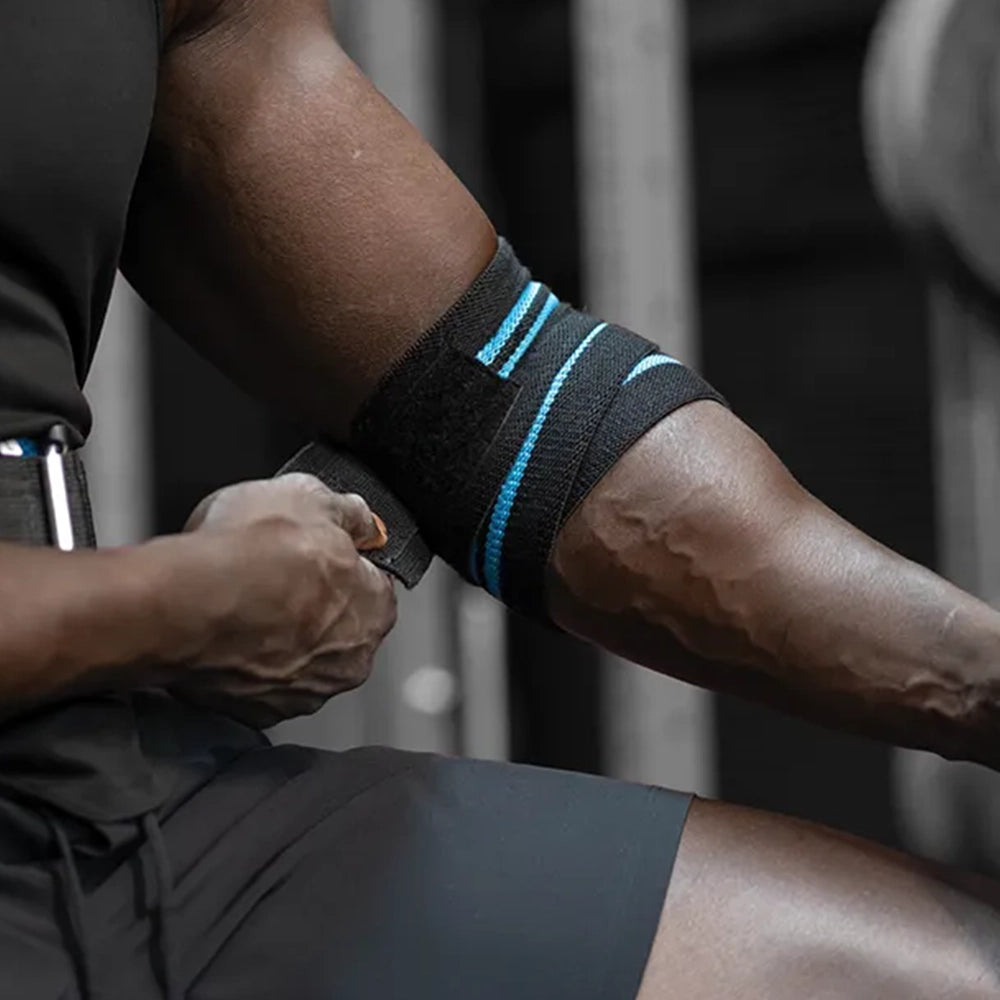Largeur de prise optimale pour le développé couché : maximisez votre force et vos gains pectoraux en 30 secondes


La largeur de la poignée joue un rôle important dans la maximisation de la force et du développement musculaire pendant le développé couché.
Cela affecte la façon dont vos muscles s’engagent, la santé de vos épaules et vos performances globales.
Avantages en termes de force : une largeur de prise optimale conduit à une efficacité de levage améliorée.
Croissance musculaire : différentes largeurs de prise activent différentes parties de la poitrine.
Prévention des blessures : un positionnement correct réduit le stress sur les épaules et les poignets.
Visitez notre page de collection de bancs de musculation réglables à vendre , pour vous assurer d'avoir le bon équipement pour effectuer des développé couchés appropriés avec différentes largeurs de prise.
Pourquoi la largeur de la poignée est importante au développé couché
La largeur de votre prise peut faire ou défaire votre technique de développé couché, affectant l'activation musculaire, la stabilité des épaules et les performances globales :
Activation musculaire : une prise plus large cible l'extérieur de la poitrine, tandis qu'une prise plus étroite met l'accent sur les triceps et l'intérieur de la poitrine.
Santé des épaules : une largeur de prise correcte aide à maintenir l’alignement des épaules, réduisant ainsi le risque de blessure.
Impact sur les performances : une prise équilibrée permet un meilleur contrôle, vous aidant à soulever des charges plus lourdes au fil du temps.
Assurez-vous d'avoir une barre d'haltères de haute qualité avec des marquages clairs pour mesurer facilement la largeur de la poignée.
Trouver la largeur de prise idéale pour votre développé couché
Plusieurs méthodes peuvent vous aider à déterminer la largeur de prise la plus adaptée à votre morphologie et à vos objectifs :
Méthode de largeur biacromiale 1,5x :
Mesure : Mesurez la distance entre vos os acromionaux (largeur des épaules) et multipliez par 1,5 pour calculer votre prise idéale.
Avantages : Offre un point de départ personnalisé en fonction de votre anatomie individuelle.
Inconvénients : peut nécessiter un réglage précis en fonction de la mobilité de l’épaule et des objectifs.
La méthode du test des pompes :
Fonctionnement : Effectuez des pompes et notez la position naturelle de vos mains. Ce positionnement est souvent associé à une largeur de prise sûre et efficace au développé couché.
Application : transférez cette largeur à votre configuration d'haltères pour une prise naturelle.
Méthode d'extension des bras debout :
Instructions : Tenez-vous debout, bras tendus et coudes légèrement fléchis. La position naturelle de vos bras peut vous aider à orienter votre prise sur le banc.
Avantages : Simple et intuitif, particulièrement pour les débutants recherchant du confort dans leur prise en main.
Une ceinture de musculation assure stabilité et soutien du tronc lors des développés couchés, notamment lors de l'expérimentation de différentes largeurs de prise. Pensez à utiliser une ceinture d'haltérophilie en cuir à cet effet.
Optimiser votre technique de développé couché pour une force maximale
Une fois que vous avez trouvé la bonne largeur de prise, la maîtrise de la forme est essentielle pour la sécurité et la force :
Configuration du banc : gardez vos omoplates rétractées et vos pieds fermement plantés pour plus de stabilité.
Respiration et renforcement : Inspirez profondément avant d'abaisser la barre et engagez votre tronc pour vous soutenir.
Trajectoire de la barre et position du coude : Abaissez la barre dans un mouvement contrôlé, en gardant les coudes à un angle de 45 degrés pour la sécurité des articulations.
Entraînement des jambes : poussez vos pieds dans le sol pour générer de la puissance à partir du bas de votre corps.
Pour assurer la stabilité et protéger vos coudes lors de la préparation à la poussée des jambes, pensez à utiliser des bandages pour les coudes .
Erreurs courantes à éviter concernant la largeur de la poignée au développé couché
Utiliser une largeur de prise inappropriée peut entraîner de mauvaises performances et augmenter le risque de blessure. Voici ce qu'il faut éviter :
Prise trop large : étire excessivement la poitrine et les épaules, augmentant le risque de blessure.
Prise trop étroite : surcharge les triceps et réduit l'activation de la poitrine, limitant ainsi les gains de force.
Placement incohérent de la poignée : ne pas saisir la barre de manière uniforme entraîne des soulèvements déséquilibrés et des blessures potentielles.
Pour maintenir les poids en sécurité et équilibrés à chaque pression, pensez à utiliser un clip pour haltère .
Largeur de prise et croissance de la poitrine : maximiser l'activation musculaire
Trouver la bonne largeur de prise peut avoir un impact direct sur la partie de la poitrine qui est activée pendant vos levées :
Développé couché à prise large : se concentre sur l'extérieur de la poitrine, augmentant la largeur.
Développé couché à prise rapprochée : concentrez-vous sur les triceps et l'intérieur de la poitrine pour une meilleure définition.
Développé couché à prise moyenne : offre un équilibre entre l'activation de la poitrine et des triceps, idéal pour la croissance globale.
L'incorporation d'haltères de 20 lb pour les mouches ou les presses avec haltères pendant l'échauffement peut être bénéfique pour cibler différents angles et prévenir les blessures lors du levage de poids plus lourds.
Conseils pour maximiser les performances au développé couché
Une fois votre prise perfectionnée, continuez à progresser en incorporant des techniques stratégiques et des variations :
Surcharge progressive : augmentez progressivement le poids que vous soulevez pour assurer des gains de force continus.
Variations de prise : Expérimentez des développés couchés à prise serrée et à prise large pour cibler différents groupes musculaires.
Exercices accessoires : incluez des mouvements comme des presses inclinées, des mouches avec haltères et des dips pour renforcer les muscles de soutien.
Un équipement polyvalent pour aider à effectuer des développé couchés en toute sécurité est un support de puissance , permettant une forme appropriée et un levage de charges lourdes avec des loquets de sécurité.
Expérimentez pour trouver la largeur de prise idéale pour votre développé couché
La largeur de prise idéale peut varier selon votre morphologie, vos objectifs et votre confort. En expérimentant différentes méthodes et en maintenant une posture correcte, vous améliorerez le développement de votre poitrine et votre force globale.
Continuez à ajuster et à peaufiner votre prise au fur et à mesure que votre entraînement évolue pour continuer à progresser vers vos objectifs de remise en forme.

